For the 2025 school year, there is 1 public middle school serving 289 students in Winston-Dillard SD 116 School District. This district's average middle testing ranking is 1/10, which is in the bottom 50% of public middle schools in Oregon.
Public Middle School in Winston-Dillard SD 116 School District have an average math proficiency score of 8% (versus the Oregon public middle school average of 29%), and reading proficiency score of 22% (versus the 45% statewide average).
Minority enrollment is 17% of the student body (majority Hispanic), which is less than the Oregon public middle school average of 38% (majority Hispanic).
Overview
This School District
This State (OR)
# Schools
6 Schools
475 Schools
# Students
1,314 Students
172,638 Students
# Teachers
89 Teachers
9,438 Teachers
Student : Teacher Ratio
15:1
15:1
District Rank
Winston-Dillard SD 116 School District, which is ranked within the bottom 50% of all 186 school districts in Oregon (based off of combined math and reading proficiency testing data) for the 2021-2022 school year.
The school district's graduation rate of 70-74% has stayed relatively flat over five school years.
Overall District Rank
#175 out of 189 school districts
(Bottom 50%)
(Bottom 50%)
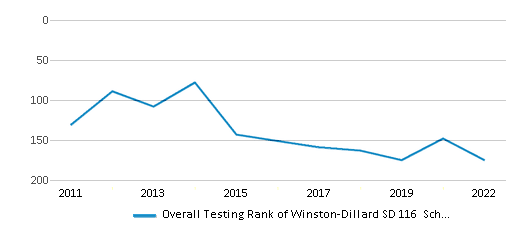
Math Test Scores (% Proficient)
15%
31%
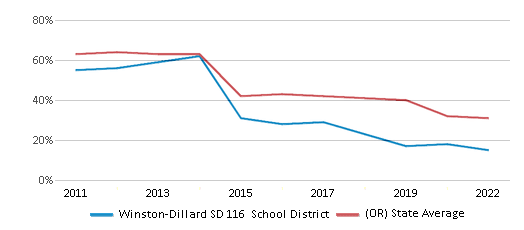
Reading/Language Arts Test Scores (% Proficient)
26%
44%
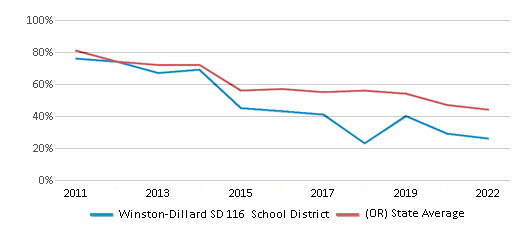
Science Test Scores (% Proficient)
17%
30%

Graduation Rate
70-74%
81%

Students by Ethnicity:
Diversity Score
0.34
0.57
# American Indian Students
24 Students
2,254 Students
% American Indian Students
2%
1%
# Asian Students
4 Students
5,936 Students
% Asian Students
n/a
4%
# Hispanic Students
138 Students
39,278 Students
% Hispanic Students
11%
23%
# Black Students
3 Students
3,780 Students
% Black Students
n/a
2%
# White Students
1,055 Students
106,509 Students
% White Students
80%
62%
# Hawaiian Students
1 Student
1,300 Students
% Hawaiian Students
n/a
1%
# Two or more races Students
86 Students
12,598 Students
% of Two or more races Students
7%
7%
Students by Grade:
# Students in PK Grade:
-
-
# Students in K Grade:
96
4,237
# Students in 1st Grade:
92
4,821
# Students in 2nd Grade:
107
5,092
# Students in 3rd Grade:
92
5,098
# Students in 4th Grade:
106
5,601
# Students in 5th Grade:
106
6,096
# Students in 6th Grade:
92
36,431
# Students in 7th Grade:
108
41,680
# Students in 8th Grade:
89
42,445
# Students in 9th Grade:
96
4,601
# Students in 10th Grade:
133
5,099
# Students in 11th Grade:
88
5,416
# Students in 12th Grade:
109
6,021
# Ungraded Students:
-
-
District Revenue and Spending
The revenue/student of $17,791 in this school district is less than the state median of $18,279. The school district revenue/student has stayed relatively flat over four school years.
The school district's spending/student of $24,744 is higher than the state median of $19,325. The school district spending/student has stayed relatively flat over four school years.
Total Revenue
$23 MM
$9,902 MM
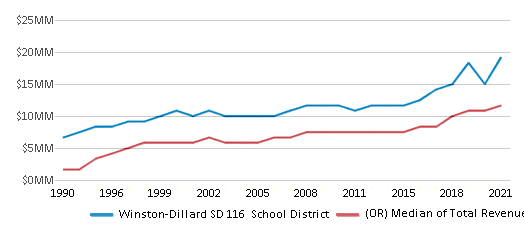
Spending
$33 MM
$10,468 MM
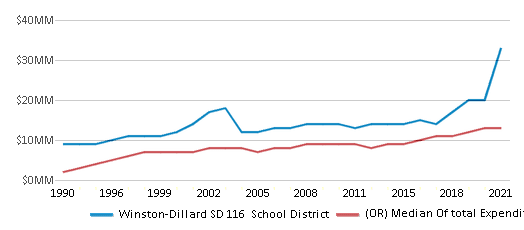
Revenue / Student
$17,791
$18,279
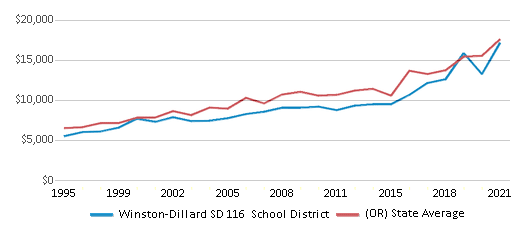
Spending / Student
$24,744
$19,325
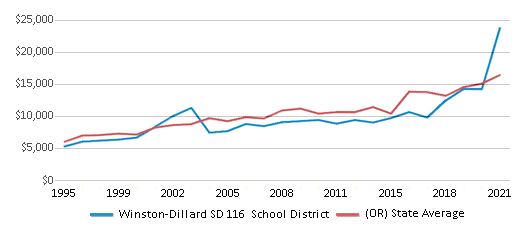
Best Winston-Dillard SD 116 School District Public Middle Schools (2025)
School
(Math and Reading Proficiency)
(Math and Reading Proficiency)
Location
Grades
Students
Rank: #11.
Winston Middle School
(Math: 6-9% | Reading: 20-24%)
Rank:
Rank:
1/
Bottom 50%10
330 Se Thompson
Winston, OR 97496
(541) 679-3002
Winston, OR 97496
(541) 679-3002
Grades: 6-8
| 289 students
Recent Articles

Year-Round Or Traditional Schedule?
Which is more appropriate for your child? A year-round attendance schedule or traditional schedule? We look at the pros and cons.

Why You Should Encourage Your Child to Join a Sports Team
Participating in team sports has a great many benefits for children, there is no doubt. In this article you will learn what those benefits are.

White Students are Now the Minority in U.S. Public Schools
Increasing birth rates among immigrant families from Asia and Central and South America, combined with lower birth rates among white families, means that for the first time in history, public school students in the United States are majority-minority. This shift in demographics poses difficulties for schools as they work to accommodate children of varying language abilities and socio-economic backgrounds.





